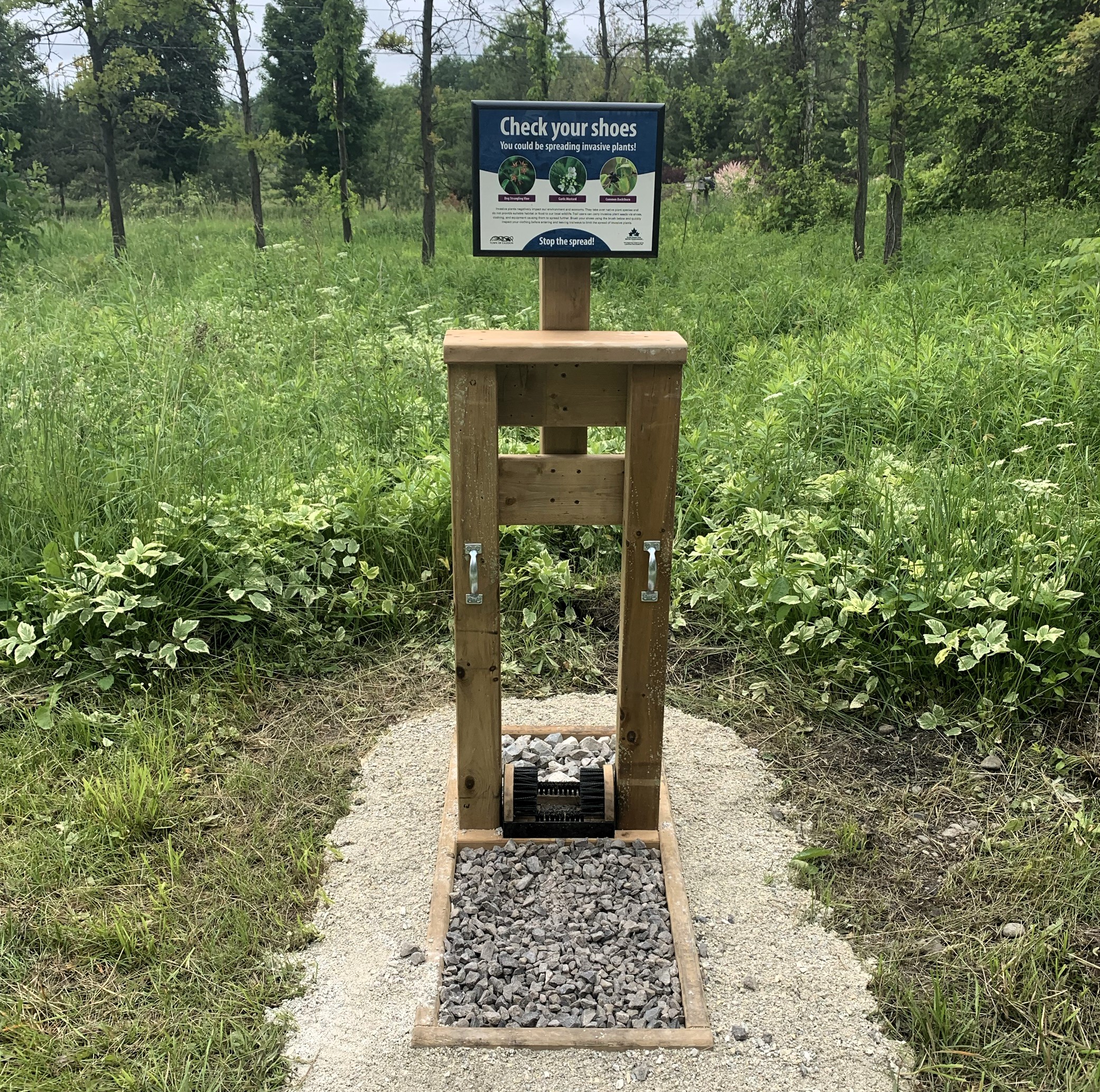Invasive Species Management
What is the Town doing? |
|
For a general overview of the Town's Invasive Species Program check out our 2024 news release:
|
Caledon Trailway Invasive Species Management |
Collaborating with Conservation AuthoritiesSince 2023, the Town of Caledon has partnered with Credit Valley Conservation (CVC) and Toronto and Region Conservation Authority (TRCA) to inventory and manage priority invasive plant species along the Caledon Trailway. This collaboration supports the Town’s Community Climate Change Action Plan (2021) by enhancing the invasive species inventory and informing targeted management actions. On-the-ground control efforts have continued through this partnership. In 2024 and 2025, these efforts were expanded with funding from the Invasive Species Action Fund (ISAF), provided by the Invasive Species Centre. This support enabled increased mechanical and chemical control along the Trailway within both the CVC and TRCA watershed boundaries. Prioritized invasive species for management:
Where are treatments occurring?Due to the extensive spread of dog strangling vine, many segments of the Trailway have been selected for management. Areas to be controlled run adjacent to the trail, but the trail will not be directly treated. Pesticide warning signs will be posted at the gates and along the work areas of active treatment areas a minimum of 24 hours before treatments occur. To limit potential exposure, trail users and pets must stay on trail when these signs are present.
Other invasive plant management on the TrailwayThe Town’s invasive species program has also initiated the physical removal (hand pulling or digging) of Garlic Mustard (Alliaria petiolata) and Himalayan Balsam (Impatiens glandulifera) in select areas of the trailway. Town staff may be seen working in these locations throughout the spring and summer months. |
Check your shoes - boot brush stations |
Have you seen one of our boot brush stations?We’ve installed three along the Caledon Trailway.
|
Noxious weed management |
What is a noxious weed?A noxious weed is a plant species that has been designated under the Weeds Control Act. To obtain this designation the plant is defined as difficult to manage and impacts agriculture, negatively impacts the health and well-being of livestock, or poses a risk to health and well-being of people. Note: Noxious weeds can include invasive, non-native, and native vegetation. The Town is actively managing noxious weeds that are poisonous to touch in several Town-owned locations. Using both mechanical and chemical management approaches targeted noxious weeds include: Giant Hogweed (Heracleum mantegazzianum: Invasive & Noxious) Wild Parsnip (Pastinaca sativa: Invasive & Noxious) Poison Ivy (Toxicodendron radicans: Native & Noxious) If you think you have found a noxious weed, report it to Service Caledon at 3-1-1 or email info@caledon.ca |
Learn more about invasive plants |
|
For more information on invasive plants, their impacts, and best management practices see the following resources:
|
Report invasive species on public property |
Think you found an invasive species on Town property?Report it to Service Caledon at 3-1-1 or email info@caledon.ca OR Report your findings to the Invasive Species Centre or on EDDMapS. |
Invasive species on your property |
| Check out our Trees and Yards page for more information on invasive plants and pests that threaten the health and biodiversity of your trees and property. |





 Subscribe to this page
Subscribe to this page